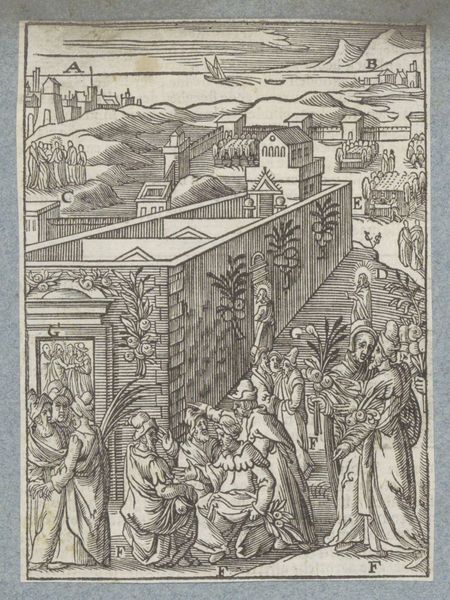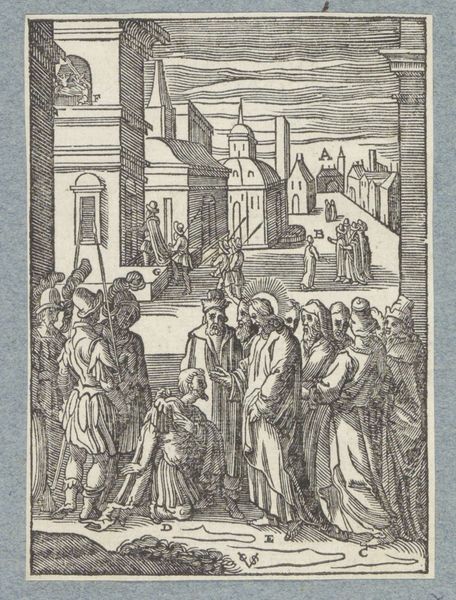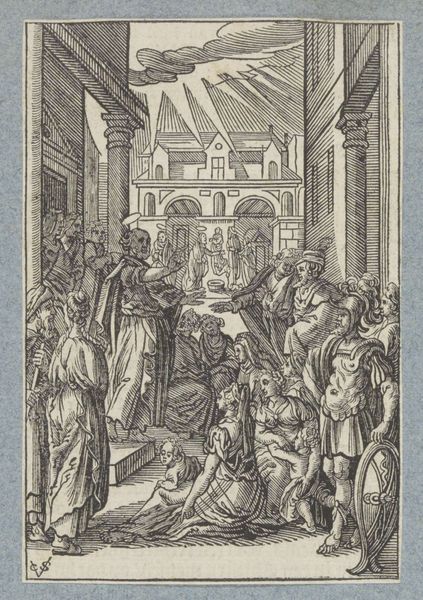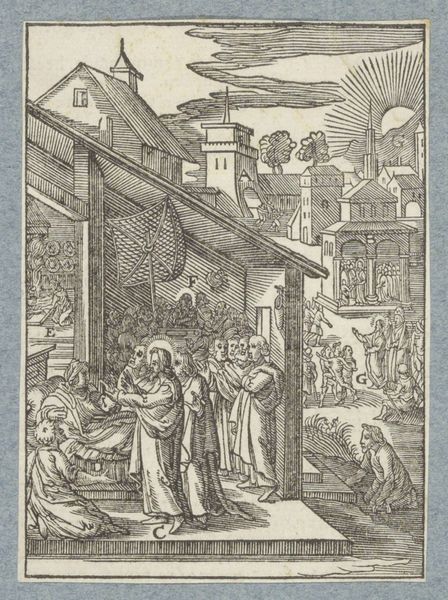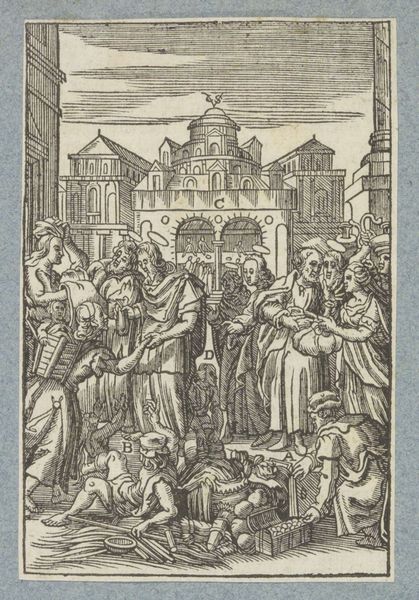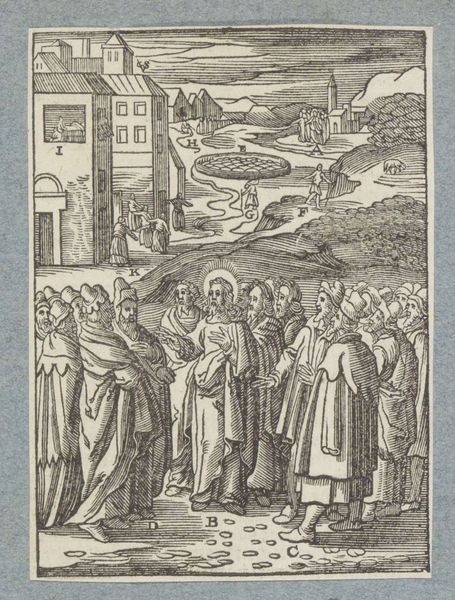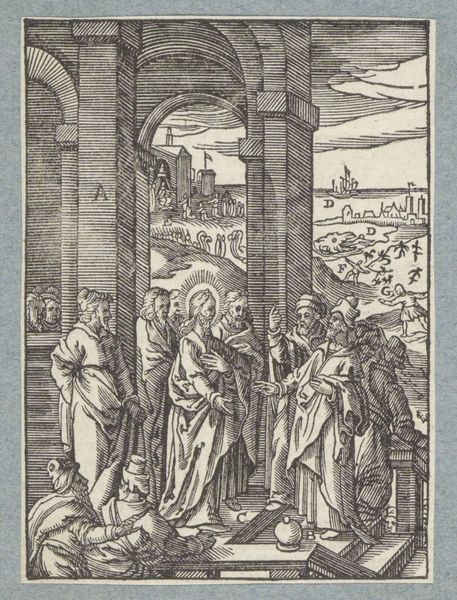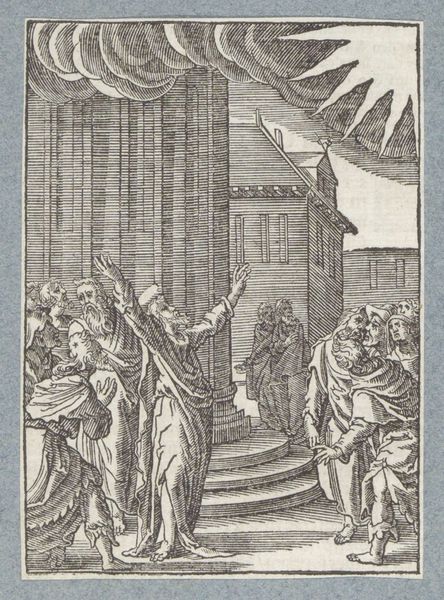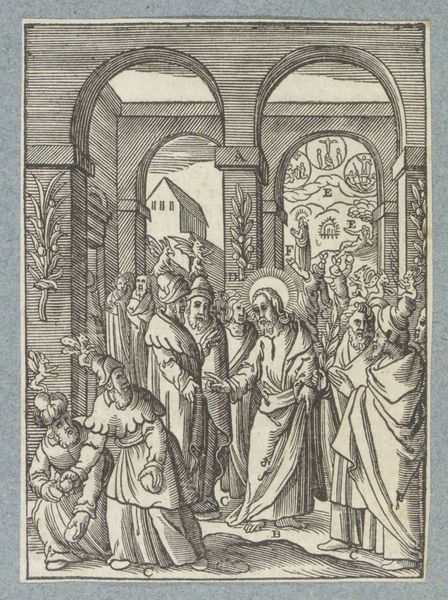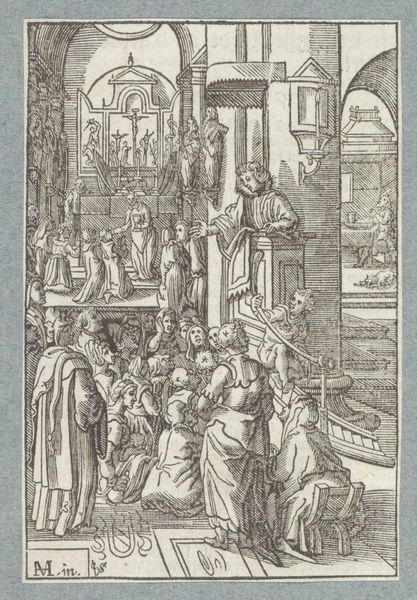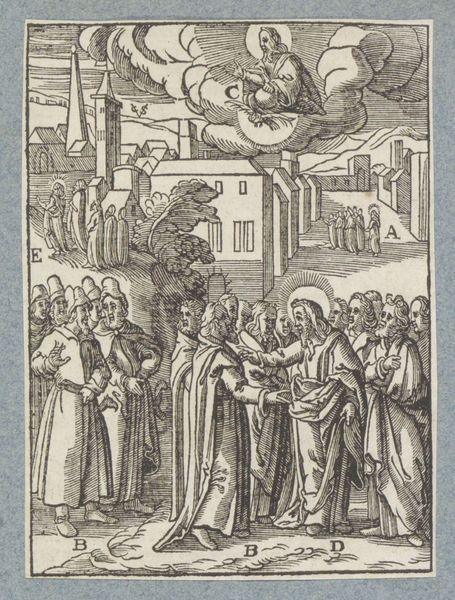
drawing, print, engraving
#
portrait
#
drawing
#
baroque
# print
#
landscape
#
figuration
#
line
#
history-painting
#
engraving
Dimensions: height 112 mm, width 76 mm
Copyright: Rijks Museum: Open Domain
Editor: This is "Arrival of Christ in Bethany," an engraving made around 1629 by Christoffel van Sichem the Younger, currently housed in the Rijksmuseum. I find the rigid, linear details so compelling in contrast to the supposed drama of the scene depicted. How might we formally interpret its lines and structure? Curator: Observe how Sichem employs a precise linear technique, almost architectural in its rigidity, to depict a scene brimming with supposed emotional resonance. Consider the sharp contrast between the controlled, geometric depiction of the building in the background and the gesturing figures in the foreground. Notice also the limited tonal range; Sichem relies on the density and direction of line to create a sense of depth and form. Editor: The density of lines does draw the eye to specific figures. It's almost like a spotlight on Christ, especially combined with the halo. Curator: Indeed, but even this symbolic element is rendered with the same unwavering linearity as the rest of the composition. There's a calculated distancing effect here, a refusal of the sentimental. Does this linear uniformity not almost drain the potential emotional weight of the religious narrative? Editor: I hadn't considered it that way. So, it's less about expressing emotion and more about a study in lines and shapes, even in a scene typically laden with feeling. The building dominating the scene feels like a character too, now that I look again. Curator: Precisely. The composition's strength resides not in the emotive content but in the complex interplay of line, form, and spatial relationships within a defined plane. Perhaps this work prompts reflection on the role of structure in interpreting art and its ability to both highlight and mute narrative elements. Editor: I can certainly appreciate that more now. Thank you for pointing that out.
Comments
No comments
Be the first to comment and join the conversation on the ultimate creative platform.
